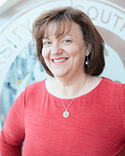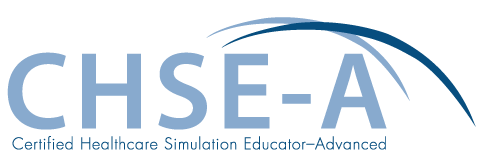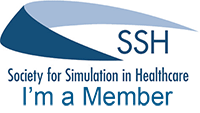How did you get into healthcare simulation?
I began learning and using simulation after the Dean of the school of nursing obtained a simulator with funds from the state health department. The Dean

informed two of the faculty members that one of us would need to learn to use the simulator and sent us to an INACSL conference in 2007. Being a kinesthetic learner, healthcare simulation appealed to me and my teaching/learning style. So, my journey began from a nursing skills lab with 2 beds and 6 exam tables expanding into two skills labs (each with 8 beds) and a 4-bed simulation lab. As I started working with undergraduate students, I wanted to increase the realism and allow for hands-on practice along with developing reflective practitioners.
The first simulation was a mock hospital unit simulation for 1st clinical semester nursing students as their initial clinical experience. One half of the class had their fundamentals course then went to the hospital for patient care rotations, while the other half of the class had their fundamentals course then participated in the mock hospital simulation before going to the hospital. Students from both groups completed a questionnaire about their anxiety level the morning of their first clinical day in the hospital. Simulation lowered the anxiety level for those participating students. Students that did not participate in the simulation were volunteering to come to the simulation lab in addition to their clinical time because they wanted the experience. Clinical instructors stated the students that participated were more prepared for the human patient care.
Simulation was introduced at our school of nursing one course per semester until simulation was incorporated across the curriculum. After encouragement of faculty members and Suzie Kardong-Edgren, I began to publish on my simulation experiences and became active in both INACSL and SSH. I have been fortunate to be in the right places at the right time. I have served on the Board of Directors in several position and I am the President of INACSL 2015-2017 and serve on the certification committee for SSH. The collaboration that occurs within both of these simulation organizations is amazing and has provided me with wonderful experiences in my professional life.
What do you like most about healthcare simulation?
Healthcare simulation allows all learners to apply “What if situations” to allow learners to connect their actions and non-actions to patient outcomes. It is no

longer acceptable to practice on patients. Patient safety must be first. I have had students comment, It is easier to take the written test because all of the information is provided in the question. However, with simulation you have to determine what is important. It is a higher level of thinking. The learner does not know what they don’t know. They know the answer to the problem but not how to discover the problem. The other important aspect of simulation is that it is only limited by my imagination and I have an imagination.
What is most challenging about healthcare simulation?
I believe the challenge that most of us in simulation face is faculty time requirement. Simulation requires more preparation time and planning than an

inpatient hospital patient care day. The simulation has to be developed, practiced, validated, and all facilitators trained. In a traditional inpatient hospital patient care day, one faculty member can supervise 8-10 students. However, at our institution simulation can require a minimum of three faculty and/or simulationists.
With the knowledge gained through becoming certified, how has this transformed and benefited your work as a healthcare simulationist?
I gained knowledge while preparing for the certification exam. When I started with simulation, there was not a vast amount of information published on nursing simulation. The required readings provided me with the rationale for some of the current practices and evidence-based practices. As I started in simulation, I performed simulation the way I was taught or taught myself based on teaching pedagogies. It provided me with confidence knowing the methods I had chosen were in alignment with the simulation leaders. I then took the information back to the faculty at the school of nursing and provided educational sessions and updates to incorporate the best practices into our simulation program. The simulation experiences for our students were developed based on best practices in order to obtain better outcomes for our students and in turn, better outcomes for patients.
I completed the CHSE-A process a year after obtaining my CHSE, as part of the pilot group. This process requires time and preparation. I was thankful I had completed my promotion packet in academia, because I used a lot of the information to complete the requirements for the CHSE-A. I highly encourage all simulationists to seek certification when qualified. It is a way to recognize your professional commitment to simulation.
Creative License: Media Presentations
Gore, T. AU Students Learn to Prevent the Spread of Infectious Disease. Opelika-Auburn
News. October 30, 2014. Available at
http://www.oanow.com/news/auburn/article_bdd2dc9a-60b6-11e4-86e5-001a4bcf6878.html
Gore, T. AU School of Nursing Simulation Treatment of Patient with Ebola and Other
Infections Disease. WTVM News. October 30, 2014. Available at
http://www.wtvm.com/story/27171274/au-school-of-nursing-simulate-treatment-ofpatient-with-ebola-other-infectious-diseases
Gore, T. & Curtis, A. Simulation-A Great Teaching Strategy. Auburn University Conversations
in Celebration of Teaching. September 2013. Available at
https://www.youtube.com/watch?v=L4NQN0l_Pcs and
https://www.youtube.com/watch?v=8TEEkhd9iDw
Gore, T. Auburn University Mock Hospital. Auburn University Website. October 26, 2011.
Available at
https://www.youtube.com/watch?v=kqSLlXFGYWo